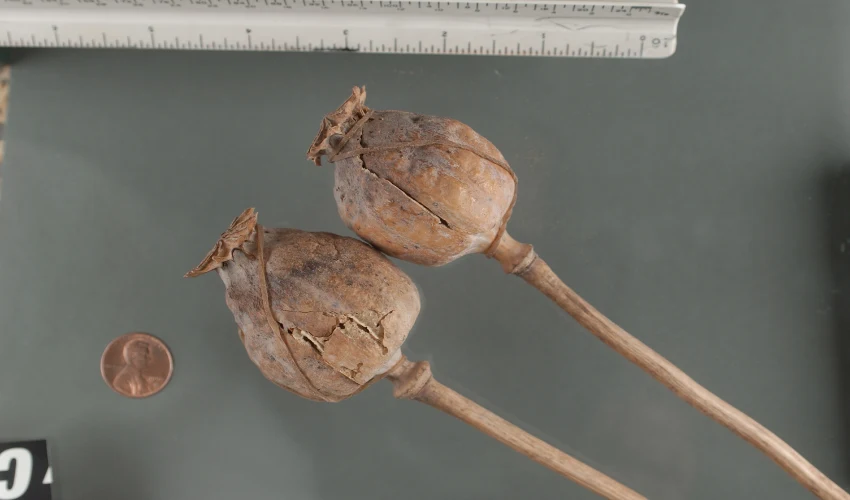Poppy pods are an incredibly versatile natural element used in a variety of crafts, from floral arrangements to decorative wreaths. Drying poppy pods correctly ensures that they retain their beauty and structural integrity, making them perfect for creative projects. If you’re eager to preserve these delicate pods for your next crafting endeavor, this guide will walk you through the best techniques for drying poppy pods, ensuring they are ready to be used in your artistic creations.
- Why Dry Poppy Pods?
Poppy pods are highly prized in crafts due to their unique texture and shape. The rounded top, often adorned with a distinctive hole pattern, makes them visually striking and ideal for rustic or natural-themed decor. However, like most flowers and plants, poppy pods begin to degrade soon after they are harvested, losing their shape, color, and appeal. Drying them helps maintain their beauty for long-lasting use in crafts.
- The Best Time to Harvest Poppy Pods
The first step to successfully drying poppy pods is harvesting them at the right time. The ideal period for picking dried poppy pods pods is after the flowers have fully bloomed and the petals have fallen off. At this stage, the pods will begin to mature, turning from green to a brownish or beige color, which is a sign they are ready for drying. It’s important to harvest the pods before they open up completely, as the seeds inside could fall out, reducing the pod’s longevity and usefulness for crafting.
- How to Harvest Poppy Pods
To harvest poppy pods, use a sharp pair of scissors or pruning shears to carefully cut the pods from the plant. Leave a few inches of stem attached to each pod, as this will make handling and hanging them for drying easier. Be gentle when handling the pods, as they are delicate and can be easily damaged. If you’re harvesting a large number of pods, consider wearing gloves to avoid irritating your skin with any pollen or sap.
- Preparing Poppy Pods for Drying
Once harvested, remove any leaves or other plant material that may still be attached to the stem. This helps prevent mold growth during the drying process and ensures the pods are the focal point of your craft. It’s also important to check for any signs of insect infestation, as this can damage the pods. If you find any small insects, use a soft brush to gently remove them.
- Drying Poppy Pods
There are several methods for drying poppy pods, but the most effective ways are air drying and dehydrating. Below are the steps for both methods:
Air Drying Method
- Choose a Dry, Well-Ventilated Area: Select a warm, dry room that has good air circulation. A room with low humidity is ideal, as this will help prevent mold and mildew from forming.
- Hang the Pods Upside Down: Using a piece of twine or string, tie the stems of the pods together in small bundles. Hang the bundles upside down from a hook, nail, or clothesline, ensuring that the pods don’t touch each other. This allows air to circulate freely around the pods as they dry.
- Wait for Drying: Depending on the humidity and temperature, it can take anywhere from two weeks to a month for poppy pods to fully dry. Check them periodically for any signs of mold or damage, and ensure they are drying evenly. When the pods are completely dry, they will feel light and brittle, and the stem will snap easily when bent.
Dehydrating Method
- Use a Dehydrator: If you need to speed up the drying process, using a dehydrator is an excellent option. Set the dehydrator to a low temperature, around 95°F to 100°F (35°C to 38°C). Arrange the poppy pods in a single layer on the dehydrator trays, making sure they aren’t overcrowded.
- Monitor the Drying Process: Check the pods every 12 hours to ensure they don’t over-dry, as this could lead to breakage. After 24 to 48 hours, the pods should be fully dried. The exact drying time will depend on the size and moisture content of the pods.
- Storing Dried Poppy Pods
Once your poppy pods are completely dried, it’s important to store them properly to maintain their shape and quality. Store them in an airtight container, such as a glass jar or a sealed plastic bag, to protect them from dust, moisture, and pests. Keep the container in a cool, dry place away from direct sunlight. Avoid storing the pods in overly humid areas, as moisture can cause mold to develop, ruining your dried poppies.
- Using Dried Poppy Pods in Crafts
Dried poppy pods can be used in a variety of craft projects. Here are some ideas:
- Floral Arrangements: Add dried poppy pods to bouquets or floral arrangements for texture and visual interest.
- Wreaths: Incorporate them into wreaths for a rustic touch that will last year-round.
- Table Centerpieces: Use poppy pods in centerpieces, either by themselves or alongside other dried flowers.
- Crafting with Children: Poppy pods are safe for children to handle (as long as the seeds are not present), making them a great option for educational or creative crafts.
Conclusion
Drying poppy pods is a simple yet rewarding process that allows you to preserve their natural beauty for all sorts of creative projects. Whether you choose to air dry or use a dehydrator, taking the time to properly harvest, dry, and store your poppy pods ensures they’ll last for years to come. Enjoy using these charming pods in your next craft project and let their delicate structure add a touch of nature to your home decor.



